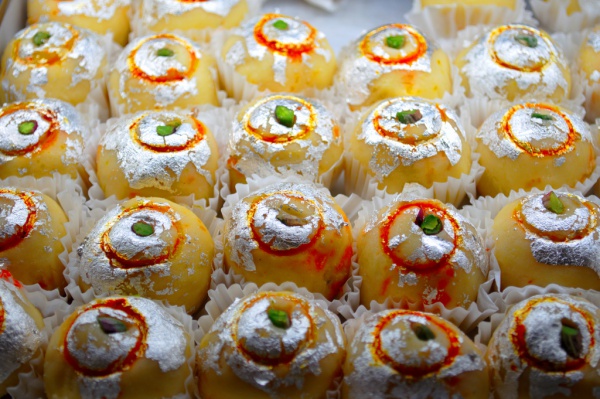Facts About Vark
Vark, also known as varak, is an ultra-thin foil made from pure metals, primarily silver and occasionally gold. It is a common embellishment in South Asian cuisine, used to adorn sweets, dishes, and even saffron rice. Although these foils are edible, they do not impart any flavor. The creation of vark involves pounding silver into sheets that are only a few micrometers thick, typically ranging from 0.2 to 0.8 micrometers. Due to their fragility, handling them requires significant care.
The use of silver and gold foils in food is not a modern innovation. It dates back to ancient Ayurvedic practices, where these metals were believed to possess medicinal properties. Ancient Sanskrit texts, particularly those focused on Ayurveda and medicine, frequently mention vark, highlighting its long-standing cultural significance in India. This practice is not exclusive to India; other regions, such as Japan and Europe, also use precious metal foils to decorate food.
Traditionally, metal dust is pounded between sheets of parchment to form the thin foils. Historically, ox gut or cowhide was used for this process, but nowadays, specially treated paper or polyester sheets coated with food-grade calcium powder are more commonly employed. In countries like India and Pakistan, silver foils often adorn sweets, dry fruits, sugar balls, betel nuts, and spices.
Concerns regarding the ethical and safety aspects of vark have been raised. Some foils might contain impurities or be produced in unhygienic conditions. To address this, the Indian government has established guidelines to ensure vark is manufactured to high standards of quality, purity, and hygiene. Despite these concerns, vark is generally considered safe to consume. Both gold and silver foils are approved as food additives in the European Union.
In terms of safety, the gold and silver used in vark are inert, meaning they do not react with the body and are not toxic. While ingesting large amounts of silver can lead to a condition called argyria, the minute quantities found in vark are deemed safe. Some studies have detected trace amounts of other metals such as nickel, lead, copper, chromium, cadmium, and manganese in certain vark foils. However, these are usually within acceptable limits and are not considered a health risk.

 China
China